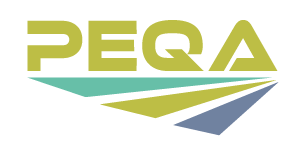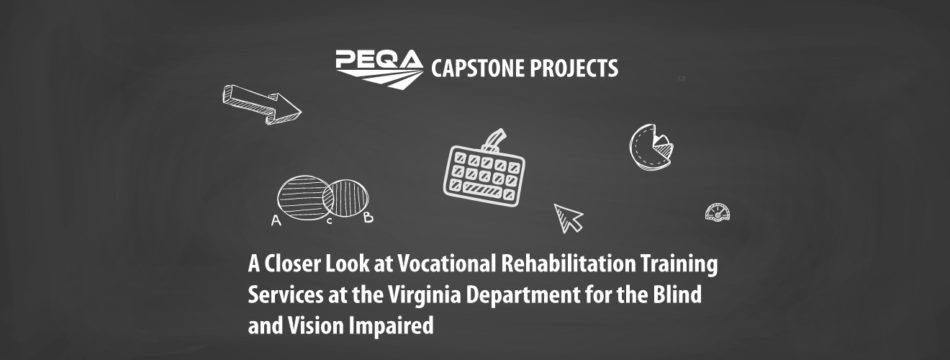Takeaways for VR Counselors & Administrators
Background
During Federal Fiscal Year (FFY) 2017, the Virginia Department for the Blind and Vision Impaired (DBVI) continued to see an increase in the number of individuals being served by the Vocational Rehabilitation (VR) program.
Historically, DBVI has expended a significant amount of VR funding on college training services for individuals participating in the VR program. In order to ensure prudent and equitable use of VR funds, DBVI was interested in taking a more focused look at college training services, college training policy, and outcomes of individuals who receive college training services as part of their VR program.
Purpose of the Study
The purpose of the study was twofold. The first goal was to examine the population of individuals who received college training services and determine whether there was an effect of college training services on employment outcomes individuals obtained, as compared with individuals who did not receive college training services.
Goal One
Who are they? Are there any differences in the demographics between two groups?
Goal Two
Are there any relationships between college services and VR outcomes?
Goal Three
Are there any relationship between college services and quality of employment (i.e., wage, occupation, hours worked)?
An additional goal of the study was to review other state VR agency college training policies and provide information for DBVI leadership to consider for potential policy revisions.
Methods
In order to examine the population of individuals who received college training, existing information in the case management system, AWARE, and RSA 911 data files were used and analyzed. Further parameters for the data selection were: VR cases closed in FFY2011-2016, including individuals who exited the VR program after individualized plan for employment (IPE) development.
Variables included individual characteristics (e.g., gender, age), types of closure, occupation at closure, and quality of employment (hourly wage, and hours worked). The data were examined using descriptive statistics tools in Excel.
Other state VR policy manuals and documents were reviewed in order to identify information about the provision of college training services for DBVI leadership to consider for potential policy updates. Sixteen VR agency policies were reviewed, including; states bordering Virginia, four agencies that specifically serve individuals who are blind and vision impaired, and state VR agencies of similar size to DBVI.
Results
- A total of 1,799 participant case records were reviewed for the study, including 215 participants who received college training services and 1,584 who did not, as part of their VR program.
- Both groups were similar in terms of gender, race, disability benefits status (i.e., SSI, SSDI), and disability priority status. However, a slightly higher proportion of individuals with the following characteristics were more likely to receive college training services: White, SSI recipients, and determined as significantly disabled. Among the individual characteristics, age at application was significantly different between two groups; the mean age of the college training service group (mean=35.4; SD=12.1) was significantly lower than that of their counterparts (mean=45.2; SD=14.4).
- Overall, 64.2% of participants with college training services (vs. 59.2% without college training services) achieved an employment outcome.
- In regard to the relationship between individual characteristics and VR outcomes, age was also identified as a significant factor. Individuals age 24 and younger who received college training services were twice as likely to be employed when their VR case was closed (60%) than those who did not receive college services (30%). The gap begins to close for individuals age 25 to 40; those who received college training services were likely to be employed at a rate of 63%, and those who did not receive college training services were employed at a rate of 58%.
- Regarding the quality of employment of those who exited DBVI with a successful employment outcome, no significant differences were found between two groups.
- The average wages for those with and without college training services were $16.15 (SD=$10.66) and $16.19 (SD=$13.61), respectively. No significant differences were found in number of hours worked per week. As observed above, participant age was also associated with the quality of employment. For example, those individuals age 24 and younger who received college training services and were employed had higher hourly wages (mean $13.75) than those who did not receive college training and were employed (mean $9.49). Individuals age 25 to 40 who received college training had a mean hourly wage of $15.66, versus those who did not receive college training had a mean hourly of wage of $14.63.
- The review of the sixteen other state VR agency policy regarding sponsorship of college training services, revealed that six of the sixteen (38%) require initial college training to occur at the community college level, eleven of the sixteen (69%) have sponsorship limits, in-state requirements, or other state incentives specific for college training sponsorship, and five of the sixteen (31%) have in-state requirements or other college sponsorship guidelines.
- Overall, the review demonstrated each state is using a variety of policies and incentives to address the potential cost of college training services. DBVI had similar policies in place and as a step in considering potential policy changes, determined to revisit existing policy regarding sponsorship of college training services with VR staff to ensure policies were understood and implemented as written.
Implication for Practice or Future Research
The qualitative and quantitative results of the study will be used as a resource to inform DBVI leadership regarding decisions on how to best utilize agency resources to deliver college training services as part of the VR program.
This study found that younger individuals were more likely to receive college training services and have more benefit from the services, when VR outcomes and the quality of employment were considered.
College training is high cost services, so it is necessary to continue to monitor the current findings by adding additional variables, such as level of education at the start of the VR program, the length of time an individual received VR services, other types of VR services received, and previous employment experience.
Resources
- Capstone Project Summary (PDF)
- Capstone Project Poster: WORD | Powerpoint
Capstone projects
More Capstone Projects: Capstone Project Hub.

